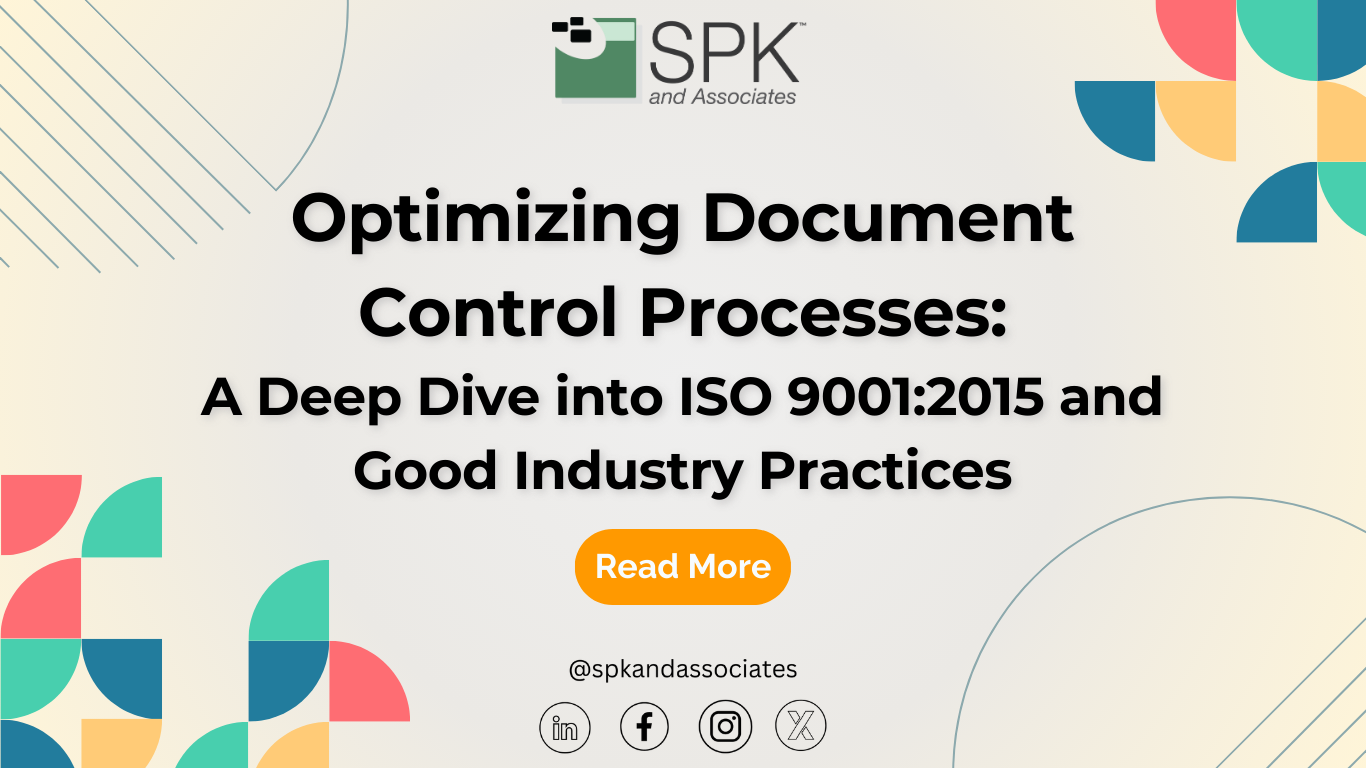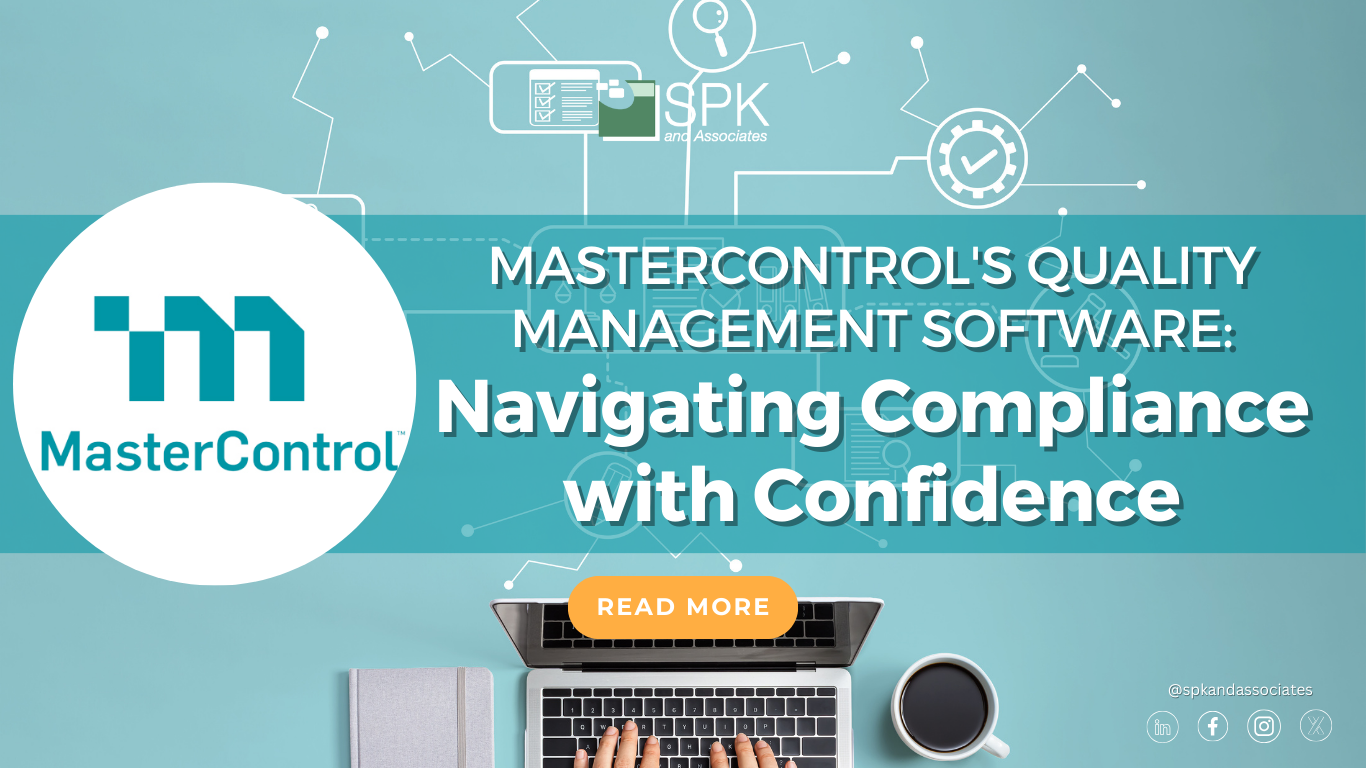ISO standard 9001:2015 refers to the regulatory requirements companies must abide by when managing the quality of their product(s). The main goals of ISO 9001 are customer satisfaction and product improvement. There are a few main things that must be defined when tracking all the aspects of a product. Companies must define a Key Performance Indicator or KPI to provide a quantifiable milestone. Next, they must define how often they will evaluate their KPIs. This brings us to the topic we will cover in this blog. Companies must define where and how they record this information, otherwise known as document control.
QMS Requirements
While customer satisfaction and product quality are ISO 9001’s priorities, the standards also provide requirements for a QMS. Companies must utilize a QMS to organize their documents. A QMS is a set of procedures required for product planning and development. It is important to note that all requirements specified in ISO 9001 regarding a QMS and product/service requirements are interdependent. The main requirement for these systems is they must include the required International Standard documentation. Additionally, they must incorporate all documented information deemed necessary by the organization for their QMS to be effective. The amount of information may be generous or minute depending on the size, complexity, and competence of an organization.
Managing all of this documentation manually can be difficult. Oftentimes, companies utilize QMS software, often called an eQMS, to organize their documents. eQMS software solutions such as MasterControl or Greenlight Guru can help manage required documents.

ISO 9001 Document Control Processes
Document Creation and Updates
In addition to QMS standards, ISO 9001 provides specific requirements for creating and updating documented information. The first requirement is to include an identifiable description of the information such as a title, author, and date. Furthermore, documents must be formatted appropriately including the language, graphics, and media format (paper or electronic). Lastly, documents must always be reviewed by the organization to confirm they are sufficient.
Document Management
Creating and updating documents is only a small portion of the document control process. Documents not only have to be sufficiently detailed but must also be suitable for use. This means documentation must be accessible when it is needed. It is important to note that access as defined by ISO 9001 refers not just to viewing a document, but the ability to edit it as well. The exception to this is information that proves conformity, which shall not be altered. With this in mind, organizations must ensure documents are protected from improper use and confidentiality loss when sharing them.
Along with the above requirements, organizations must also address how:
- the document will be distributed, accessed, and used,
- the document will be stored including legibility preservation,
- changes will be controlled (otherwise known as version control),
- the document will be retained over time.
External Documents
All of the previous information applies to internal documentation, but how should external documents be stored? ISO 9001 specifies any documentation of external origin that an organization deems necessary for QMS operations must be controlled. These documents will be managed like internal documents.

ISO 9001 Internal Auditing
Even though all requirements are clearly stated in ISO standard 9001, it can be difficult for organizations to know if they are correctly following every requirement. ISO 9001 can be a bit ambiguous in its descriptions. For example, it says “the document should be distributed” but does not specify who should be distributing it. That is for the organization to decide. This is where Internal Audits come in.
Internal Auditing, sometimes referred to as informal auditing is the practice of analyzing documents to identify compliance issues, inaccurate data, and risk factors. Its goal is to review an organization’s current processes and find potential improvements. This is different from an external audit which aims to assess regulatory compliance as well as financial information. A company may conduct an internal audit to check if its compliance needs are being fulfilled.
ISO 9001 Document Control Example
Recently, SPK had the opportunity to run an internal audit for a company we will call “Acme Corporation.” Acme Corporation did not want a costly external audit that would provide them with more information than they needed. Instead, they wanted to see if their internal processes were up to par. After conducting an internal audit for them, the results revealed Acme Corporation was 90% ISO compliant. We provided them with recommendations that would help get them 100% compliant. The internal audit was a cost-efficient and effective way for Acme Corporation to improve their production and documentation processes.
Optimizing Your Practices for ISO 9001
We hope this blog has informed you on how to achieve ISO compliance specific to ISO 9001’s document control standards. If you have any further questions about ISO compliance, optimizing your workflows, QMS software, or internal auditing contact our experts today.








